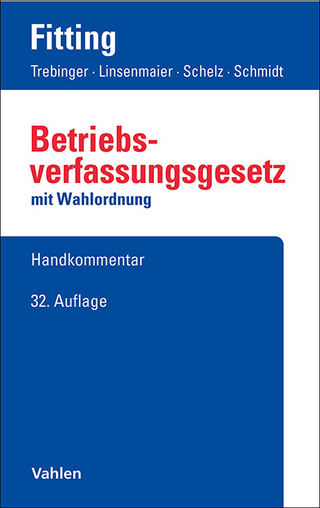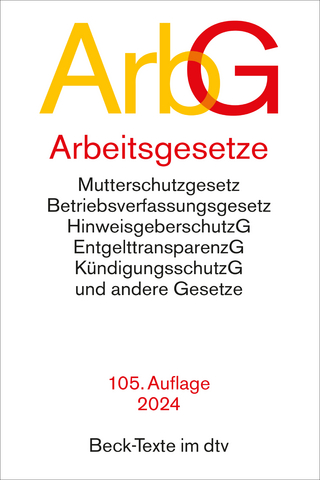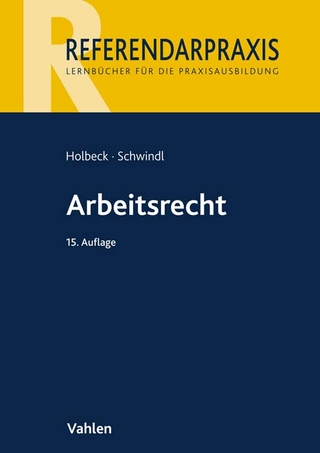
World Trade, Child Labour and Transnational Constitutionalism
Martinus Nijhoff (Verlag)
978-90-04-69089-9 (ISBN)
The Open Access publication of this book has been made possible by the Swiss National Science Foundation.
Is the current structure of international law still adequate to solve global problems such as child labour? This book argues for more coherence between human rights and trade law, analysing the world trade law compatibility of topical trade measures on (forced) child labour such as the US Tariff Act of 1930 or the proposal for an EU Forced Labour Regulation, mainly under the GATT non-discrimination principles and the policy exceptions clause. Discussing theories such as constitutionalism and pluralism, Franziska Humbert develops the idea of a New Legal Humanism as a cognitive frame for the global legal order.
Franziska Humbert, Ph.D. (2007), PD (2021) at the University of Berne, head of economic justice at Oxfam Deutschland has published on the issue of trade, business and human rights, including entries in legal commentaries on the German Supply Chain Act.
Foreword
Preface
Acknowledgements
List of Abbreviations
Introduction
1 Globalization, Child Labour and the International Legal Order
2 Contents
1 The Problem of Child Labour and Trade
1 Introduction
2 The International Dimension of Child Labour
2.1 Child Labour as a Global Problem
2.2 The Protection from Exploitative Child Labour as Ius Cogens
3 The Need for Global Solutions Including Trade Measures
2 The Status Quo of Trade Measures on Child Labour in WTO Law
1 Introduction
1.1 Unilateral Trade Measures
1.2 Defining PPM s and Rules of Interpretation
2 The Rationale of the WTO and the GATT 1994
3 Trade Measures Concerning Child Labour under the Most-Favoured-Nation Clause of GATT Article I
3.1 Most-Favoured-Nation Obligations
3.2 The Relationship with the TBT Agreement
3.3 The Scope of GATT Article I:1
3.4 Like Products
3.5 Any Advantage
3.6 Immediately and Unconditionally
3.7 Exceptions under the Enabling Clause
3.8 Conclusion
4 Compatibility of Trade Measures on Child Labour with GATT Art. II
5 Trade Measures Concerning Child Labour under GATT Art. III
5.1 Overview over the Structure and Scope of GATT Art. III
5.2 The Coverage of GATT Art. III in Relation to PPM-Measures
5.3 Like Products
5.4 Equality of Treatment
5.5 Contextual Approach
5.6 Ius Cogens
5.7 Conclusion
6 Application of the Results found under GATT Art. III to GATT Art. I
6.1 Introduction
6.2 Like Products
6.3 Regulatory Purposes and Ius Cogens
6.4 ‘Asymmetric Impact’
6.5 ‘Supply Substitutability’ and ‘Inherence’ Test
6.6 Conclusion
7 Application of the Results found under GATT Art. III to GATT Art. II
8 Compatibility of Trade Measures on Child Labour with Quantitative Restrictions of GATT Art. XI and XIII
8.1 Trade Measures on Child Labour as Quantitative Restrictions
8.2 The Ius Cogens Nature of the Prohibition of Child Labour
9 Trade Measures on Child Labour under the GATT Art. XIX
10 Trade Measures Concerning Child Labour under GATT Art. XX
10.1 Overview over the Scope and Structure of GATT Art. XX
10.2 The Public Morals Exception
10.3 Human Life and Health
10.4 Prison Labour
10.5 The Chapeau of GATT Art. XX
10.6 Burden of Proof
10.7 Conclusion
11 Trade Measures Concerning Child Labour under GATT Art. XXI
11.1 Introduction
11.2 GATT Art. XXI (b) (iii)
11.3 GATT Art. XXI (c)
11.4 Conclusion
12 Compatibility of Trade Measures on Child Labour with the Agreement on Technical Barriers to Trade
12.1 Introduction
12.2 Scope of Application
12.3 Substantive Provisions of the TBT Agreement
12.4 Conclusion
13 Compatibility of Trade Measures on Child Labour with the Agreement on Government Procurement
13.1 Introduction
13.2 Art. IV – General Principles
13.3 Art. VIII – Conditions for Participation
13.4 Art. X – Technical Specifications and Tender Documentation
13.5 Art. XV – Treatment of Tenders and Awarding of Contracts
13.6 Art. III – General Exceptions
13.7 Conclusion
14 Non-WTO Norms as a Defence for Trade Measures on Child Labour
14.1 Introduction
14.2 The Jurisdiction of WTO Panels
14.3 The Applicable Law
14.4 Conclusion
15 Conclusion of Chapter 2
3 A Constitutionalist Approach to International Law
1 Introduction
2 Different Approaches to International Law
2.1 Legal Interpretation
2.2 New Haven School
2.3 Feminist Approaches to International Law
2.4 Global Legal Pluralism and Conflicts-Law Approach
2.5 Global Administrative Law
2.6 International Public Authority
2.7 Constitutional Approaches
3 A New Legal Humanism
3.1 Limits of Hart’s Positivism and Kelsen’s ‘Pure Law Theory’
3.2 Towards More Natural Law
3.3 The Quest for Global Values
3.4 Core Elements of a New Legal Humanism
4 Implications of a New Legal Humanism for Trade and Child Labour
1 Introduction
2 Towards More Substantive Coherence of Trade and Human Rights Law
3 Direct Effect of WTO-Law and Human Rights
3.1 The Traditional Doctrine of Direct Effect
4 Institutional Coherence: A New ILO-WTO Joint Implementation Mechanism on Child Labour
4.1 Introduction
4.2 Trade-and Country-Related Child Labour
4.3 Institutional Framework
4.4 Cooperative Activities
4.5 Dispute Settlement
4.6 Human Rights Obligations for Companies?
5 Conclusion
5 Concluding Summary
1 Summary of Results
1.1 Chapter 1
1.2 Chapter 2
1.3 Chapter 3
1.4 Chapter 4
2 Epilogue
Bibliography
Table of WTO Reports
Table of GATT 1947 Reports
Index
| Erscheinungsdatum | 16.01.2024 |
|---|---|
| Reihe/Serie | World Trade Institute Advanced Studies |
| Sprache | englisch |
| Maße | 155 x 235 mm |
| Gewicht | 986 g |
| Themenwelt | Recht / Steuern ► Arbeits- / Sozialrecht ► Arbeitsrecht |
| Recht / Steuern ► EU / Internationales Recht | |
| Recht / Steuern ► Öffentliches Recht ► Völkerrecht | |
| ISBN-10 | 90-04-69089-1 / 9004690891 |
| ISBN-13 | 978-90-04-69089-9 / 9789004690899 |
| Zustand | Neuware |
| Informationen gemäß Produktsicherheitsverordnung (GPSR) | |
| Haben Sie eine Frage zum Produkt? |
aus dem Bereich


